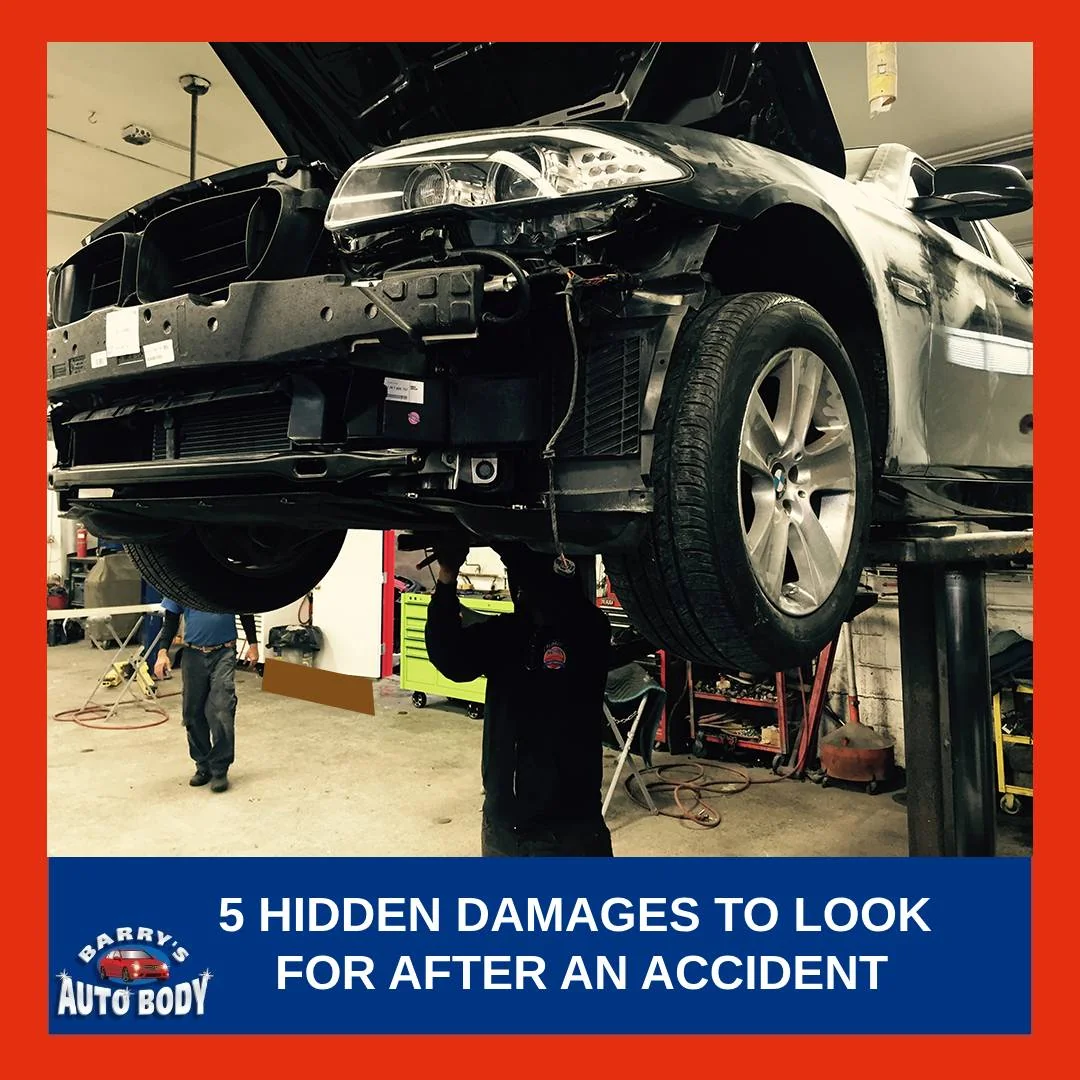Car accidents, regardless of their severity, can be distressing experiences. In the aftermath, our immediate focus often shifts to the visible damages—dented fenders, scratched paint, and broken lights. However, many fail to realize that some of the most critical damages are hidden from plain sight. In this comprehensive guide, we will delve into the world of unseen damages, exploring five often overlooked areas that can have profound consequences if left unaddressed.
The Obvious vs. the Unseen:
It’s human nature to attend to what is visible and immediate. After an accident, our eyes naturally gravitate toward the external damages that mar the aesthetics of our vehicle. However, the true danger lies in what is not immediately apparent. Hidden damages can compromise the structural integrity of your vehicle, jeopardizing your safety and the performance of your car.
Structural Integrity:
One of the first hidden damages to inspect after an accident is the structural integrity of your vehicle. Even in seemingly minor collisions, the frame and chassis can suffer damage that is not visible to the naked eye. A compromised structure poses a safety risk and can lead to more extensive and expensive repairs down the line. Professional auto body inspectors employ advanced techniques to detect structural damages, ensuring that your vehicle is restored to its pre-accident condition.
Suspension and Alignment Issues:
Suspension systems and wheel alignment are often overlooked after an accident, but they play a crucial role in the overall performance of your vehicle. Even a minor impact can knock your wheels out of alignment or damage suspension components. Signs of suspension or alignment issues include uneven tire wear, drifting to one side, or steering wheel vibration. Ignoring these symptoms can lead to further damage and compromise the handling of your vehicle.
Hidden Mechanical Damage:
Beyond the visible body damage, accidents can also cause hidden mechanical damage. Components under the hood may be affected, leading to issues with the engine, transmission, or other critical systems. It’s essential to have a qualified mechanic inspect your vehicle thoroughly after an accident to identify and address any hidden mechanical damages promptly.
Fluid Leaks and Undercarriage Damage:
Fluid leaks are often a consequence of hidden damages. Impact from a collision can cause cracks or ruptures in the vehicle’s fluid-carrying components, such as the radiator or transmission lines. Checking for fluid leaks, especially underneath the vehicle, is crucial. Additionally, the undercarriage of the car may sustain damage that is not visible from above. Inspecting this area is vital to ensure no compromised components could affect the vehicle’s functionality and safety.
Electronic Systems and Wiring:
Modern vehicles are equipped with sophisticated electronic systems that control various functions, from safety features to entertainment systems. Accidents can result in hidden damage to wiring and electronic components. Issues with these systems may not manifest immediately but can cause problems over time. Professional inspections are necessary to identify and address any electronic and wiring damages, preventing potential malfunctions and ensuring your vehicle’s overall reliability.
The Role of Professional Inspection:
While it’s tempting to rely on a visual inspection or a DIY assessment after an accident, the expertise of a professional is invaluable. Auto body repair specialists have the knowledge, experience, and tools to conduct thorough inspections, identifying both visible and hidden damages. Trusting a professional ensures that all potential issues are addressed, safeguarding your vehicle’s safety and longevity.
Commonly Overlooked Areas:
To facilitate a comprehensive inspection, consider the following checklist of commonly overlooked areas:
- Trunk: Inspect for any structural damage, especially if the rear of the vehicle was impacted.
- Behind Bumpers: Check for damages behind the bumpers, as these areas are often affected during collisions.
- Under the Hood: Examine the engine compartment for damage to any hidden mechanical and electronic components.
Our natural instinct is to address the visible damages in the aftermath of a car accident. However, the hidden damages can be equally, if not more, detrimental to the safety and performance of your vehicle. From structural integrity to electronic systems, every aspect requires careful consideration. By prioritizing a professional inspection and paying attention to commonly overlooked areas, you can ensure that your vehicle is restored to its pre-accident condition, minimizing the risk of future complications.
If you’ve recently been in an accident or have questions about hidden damages, share your experiences or inquiries in the comments below. Our team of auto body repair experts is here to provide guidance and support. Safety comes first, and a thorough inspection is the key to a fully restored and reliable vehicle. If you require professional auto body repair services, don’t hesitate to reach out – we’re here to help you get back on the road with confidence.

